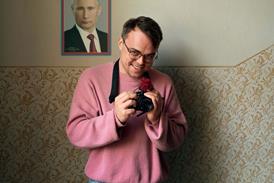The DVD did more than create a new means of exploiting old product. It created an industry devoted to transferring analogue celluloid motion pictures into the digital domain, of converting image and sound into data.
It seems a straightforward concept: point a film projector into the lens of an electronic camera. But the electronic reality is anything but simple. According to Paul Hearty, director of the Rogers Communications Centre at Ryerson University in Toronto, there are two principal hurdles in the digital archiving process: storage and obsolescence.
The more sophisticated the data rendering, the bigger the memory requirement. Hearty would know - as one of the pioneers of the North American HD TV standard, he is now working with image resolutions well beyond standard high-definition imagery. 'At seven gigabytes per second, that's a lot of storage,' he says.
Then there is the unnervingly brief lifespan of formats. The motion picture projector is more than 100 years old but functions pretty much the same as when it was invented. Not so with electronic technology: it is one thing to record a film but, says Hearty, how do you ensure your recording will be recoverable'
As the US studios began to digitise their libraries as part of the move into the DVD format, they had to make the best possible copy of the celluloid image. These are the masters. But the studios still retain all the VHS masters for the pre-recorded VHS tapes it sold. Which is a lot of tapes.
'As you lay down copies, you have to lay down machines so that people in the future can access those copies,' says Hearty. 'If you want to preserve film, you have to preserve projectors.' And so on.
Further, as the technology has increased in sophistication, as DVD has made way for HD-DVD and Blu-ray, the quality of the image recording has improved dramatically. But while digital-cinema technologists hope to exceed film in image quality, 'high-definition still can't match film at its best,' says Hearty. Which means the studios will have to hold on to their celluloid treasures for a while yet. There is life in those frames that has eluded capture.
Unfortunately, the process of converting old nitrate films to celluloid began too late for many films. Then again, it is something of a miracle that it happened at all. The University of California, Los Angeles (UCLA) film and television archive was launched as a rescue mission, when a film historian learned the studios were planning to dump their old negatives in the Pacific Ocean.
And what happens, heaven forbid, if Los Angeles is swallowed by an earthquake' Is that the end of the studios' archives'
'We have digital files stored in New Jersey,' says David Bishop, president of Sony Pictures Home Entertainment.

















No comments yet